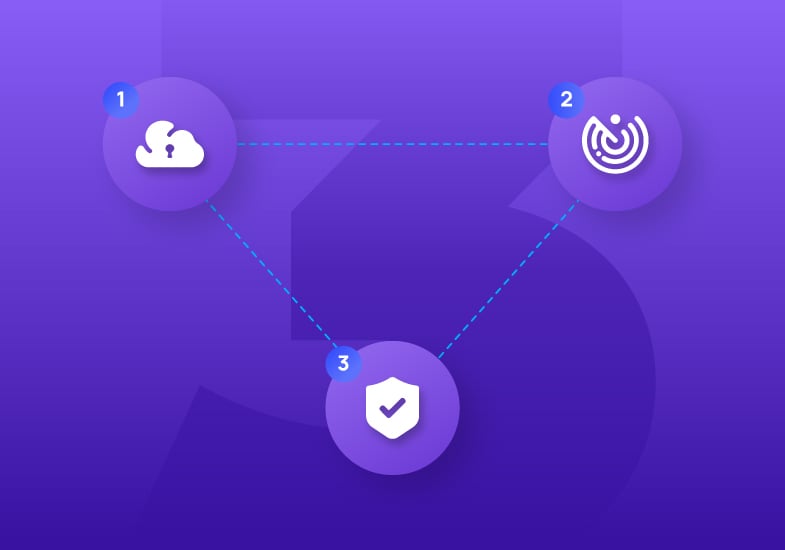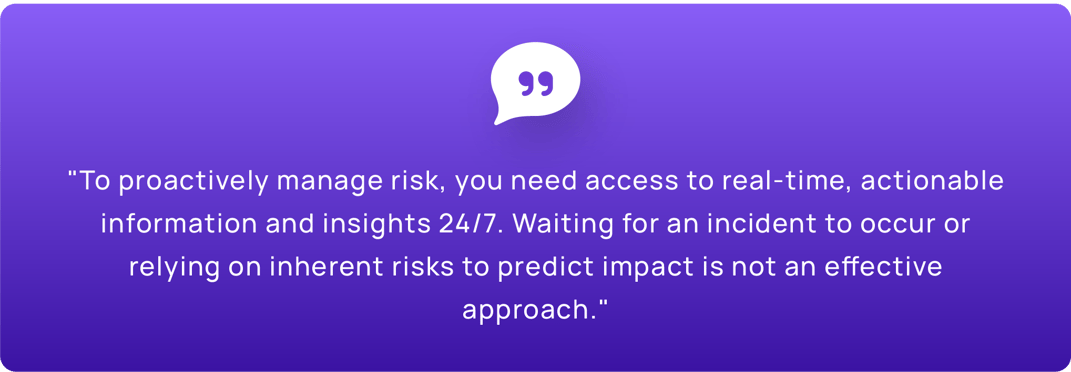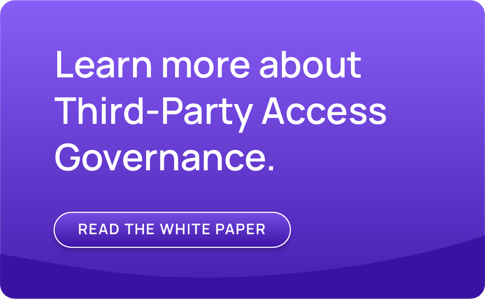Delegating Risk Mitigation and Reporting
To proactively manage cyber risk, you need access to real-time, actionable information and insights 24/7. Waiting for an incident to occur or relying on inherent risks to predict impact is not an effective approach. Any delay in response can mean a higher impact if an attack occurs.
But for many organizations, it isn’t feasible to hire staff with the skills and experience to identify, assess, and respond — let alone keep up with the latest threats and regulatory standards. Adding to the complexity, regulators are cracking down on third-party access as this threat vector continues to make headlines.
How Saviynt Helps. Saviynt automates compliance checks and monitors third-party vendors in real-time, continuously assessing their security posture and alerting the company to any vulnerabilities or compliance issues. This helps you quickly evaluate the security and compliance risks posed by granting access to any given third party. If a breach does occur, malicious activities can be stopped immediately and you can revoke access before serious damage occurs. In some cases, these are accidental and can be quickly corrected. But if they are malicious, the third-party organization can be alerted to manage the issue.
Our real-time reporting capabilities also generate audit trails that give organizations additional sight lines into third-party activities. Out-of-the-box controls are cross-mapped across regulations, industry standards, platforms, and control types, accelerating audit prep and providing fully documented compliance reports and dashboards for regulations like SOX, HIPAA, PCI DSS, GLBA, ISO 27002, FISMA, and CMMC.
Taking stock of your third-party risk might feel like an overwhelming task, but congratulations, you’ve taken the first steps to protect your assets, reputation, and bottom line. You don’t have to do it alone. Saviynt has your back for the entire third-party journey, from first introduction to relationship completion.









